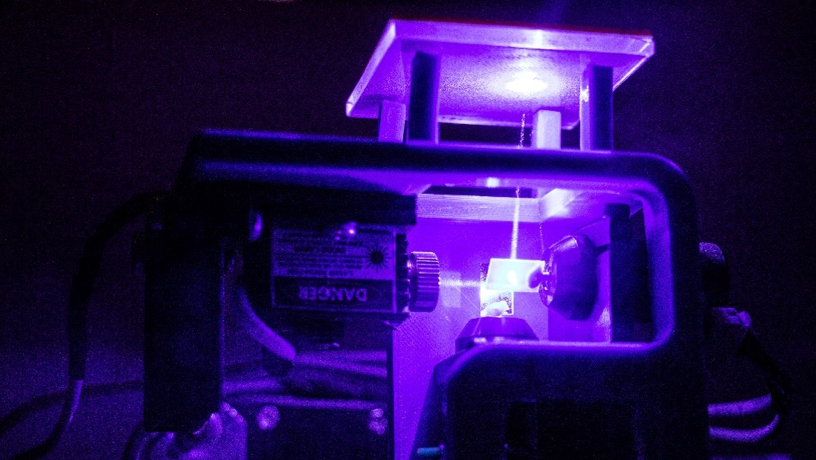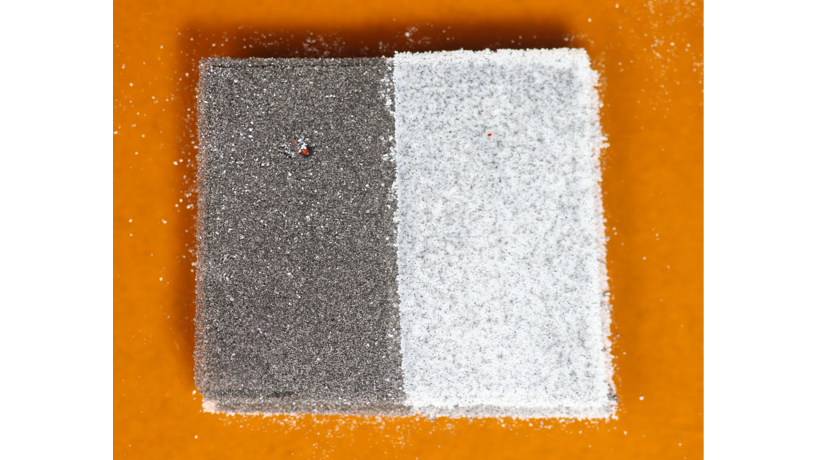Printing a part that is made of multiple materials has been possible with fused deposition modeling and inkjet 3D printing technologies, though not so much with selective laser sintering (SLS), where a part is constrained to a single uniform material. Multi-material powder 3D printing, while not a new concept, had been challenging to develop up until now.
In the first quarter of this year, Belgian manufacturer Aerosint announced successful tests in printing bi-metallic parts using stainless steel and copper alloys, and is working to develop its proprietary laser powder bed fusion technology that combines metals and polymers, separately or simultaneously, including PEEK, PPS, and potentially ceramics and organic materials. Advancing 3D printing technologies such as SLS, to include multi-materials, would expand their scope far beyond the applications and possibilities of single material parts–which is what most real-world parts are like.
Researchers Hod Lipson and John Whitehead at the Department of Mechanical Engineering at Columbia University (U.S.) have developed a novel method using an inverted laser and transparent glass plates to print multi-material parts using SLS technology. In their SLS approach, the laser does not point downward into the powder bed, but upward.
Instead of the powder bed, thin layers of powder material are coated onto glass plates, and the laser is directed through a bottom glass plate to fuse the layer. The plate with the selectively fused material (using a pre-programmed virtual blueprint) then lifts and moves to another plate, coated with a different material, and the process repeats.
With the selective fusion, and multiple material glass plates (that also eliminate the need for a powder bed, and economizes use of material) parts can be built that either combine materials in one layer, or form a stack of different materials in each layer. To validate their proof of concept, the researchers printed a 2.18 mm, 50 layer thick part using TPU, as well as a multi-material part combining nylon and TPU. Advances such as this in SLS 3D printing are significant, as Lipson points out,
“Now, let me ask you, how many products are made of just one material? The limitations of printing in only one material has been haunting the industry and blocking its expansion, preventing it from reaching its full potential.”
What this approach also allows is a full-view of the printed part as it is being printed – as opposed to only being able to view it (or identify defects) once it emerges and is dusted from the powder bed. John Whitehead explained this limitation,
“…in a standard printer, because each of the successive layers placed down are homogeneous, the unfused material obscures your view of the object being printed, until you remove the finished part at the end of the cycle. Think about excavation and how you can’t be sure the fossil is intact until you completely remove it from the surrounding dirt. This means that a print failure won’t necessarily be found until the print is completed, wasting time and money.”
It is worth noting that Aerosint’s approach, compared to that of the researchers at Columbia, does use powder beds, with a downward pointing laser and multiple rollers to deposit and fuse just the required amount of powder for each layer pattern.
“This technology has the potential to print embedded circuits, electromechanical components, and even robot components. It could make machine parts with graded alloys, whose material composition changes gradually from end to end, such as a turbine blade with one material used for the core and different material used for the surface coatings,” noted Lipson. “We think this will expand laser sintering towards a wider variety of industries by enabling the fabrication of complex multi-material parts without assembly. In other words, this could be key to moving the additive manufacturing industry from printing only passive uniform parts, towards printing active integrated systems,
This is why the team at Columbia Engineering is continuing to expand their research to include resin and metallic materials, with a much wider combination of properties – and perhaps in the near future, the limitations of 3D printing in multi-material parts, at scale, will be eliminated, and businesses or consumers could print real-world parts or devices on-demand, that can actually be used directly from the printer.
Subscribe to Our Email Newsletter
Stay up-to-date on all the latest news from the 3D printing industry and receive information and offers from third party vendors.
You May Also Like
3D Printing Financials: Protolabs’ Q1 3D Printing Revenue is Flat, Company Advances in Technology Push
Protolabs (NYSE: PRLB) has kicked off 2024 with a mild boost in revenue, revealing how the Minnesota-based company manages to adapt and thrive even in uncertain market conditions. While the...
NASA Backs Project for 3D Printing Space Sensors
NASA granted $300,000 to Florida State University (FSU) and Florida Agricultural and Mechanical University (FAMU) to pioneer a project using 3D printing to develop cutting-edge sensors capable of withstanding the...
Further Understanding of 3D Printing Design at ADDITIV Design World
ADDITIV is back once again! This time, the virtual platform for additive manufacturing will be holding the first-ever edition of ADDITIV Design World on May 23rd from 9:00 AM –...
Daring AM: Rocket Lab Shoots for the Stars, Astrobotic Wants to 3D Print on the Moon
Once again, space exploration teams up with the 3D printing industry, launching projects that could change how we explore space. Pioneering space manufacturer Rocket Lab (Nasdaq: RKLB) secured a $14.49...



































